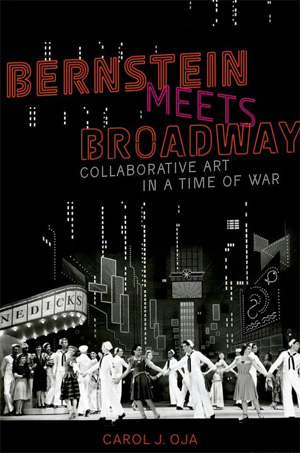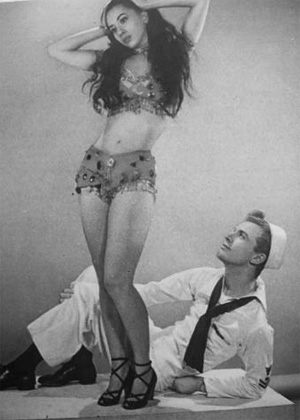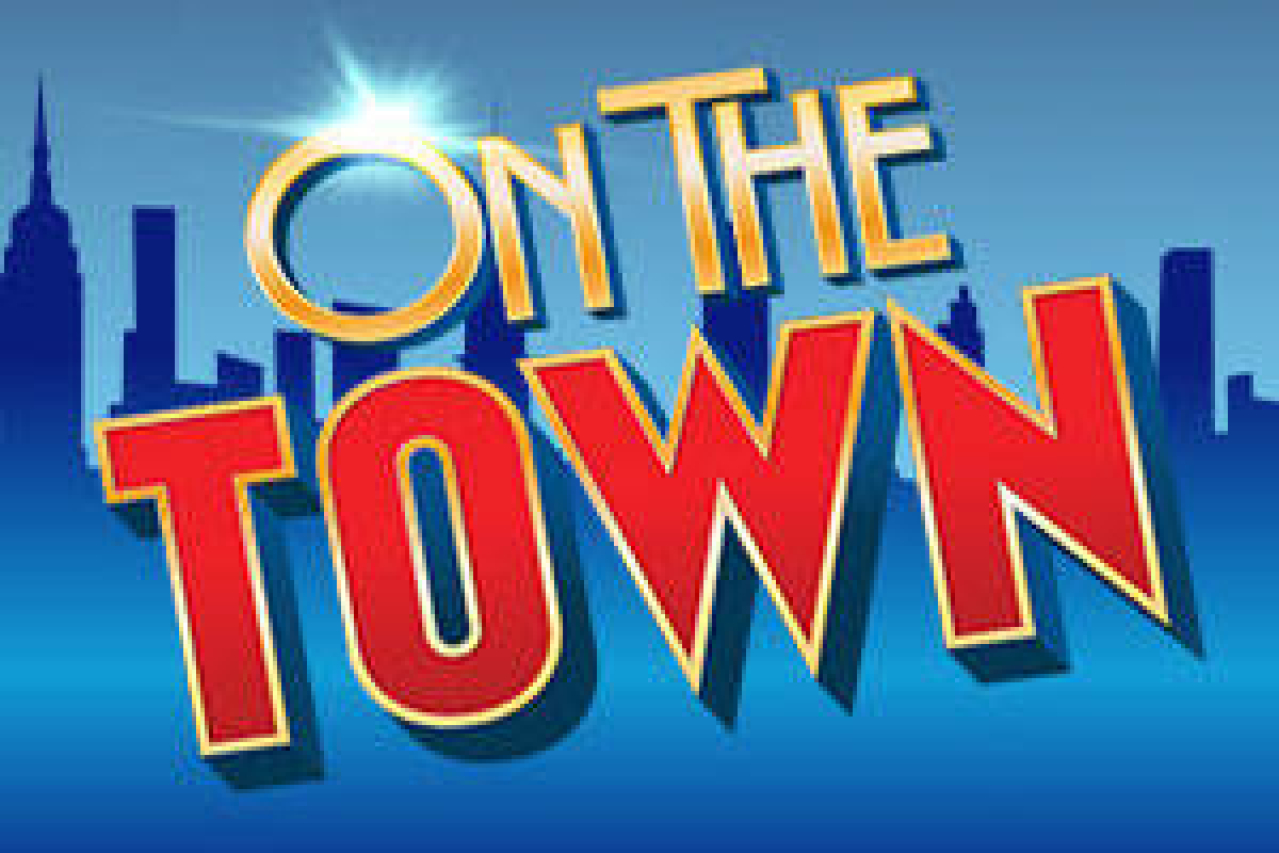Japanese Internment, Civil Rights, and On the Town

(© Joan Marcus)
Leonard Bernstein, Betty Comden, and Adolph Green were all newcomers to Broadway when their debut musical, On the Town, opened in 1944. Previously just a performer, Jerome Robbins made his Broadway debut as a choreographer with this wartime musical comedy. These four kids would go on to reshape the performing arts in America, with Bernstein and Robbins deftly bridging the divide between "high" and "low" art (Bernstein became the principal conductor of the New York Philharmonic while Robbins frequently choreographed for the ballet).
Author Carol J. Oja takes us back to that youthful collaboration among the future cultural titans in her new book, Bernstein Meets Broadway: Collaborative Art in a Time of War, which chronicles some of the not-so-known stories of On the Town's original production.
For instance, the show follows three American sailors on shore leave in the Big Apple. While Chip wants to sight-see, Gabey only has eyes for a girl he first encounters on a subway poster: "exotic Ivy Smith." What makes Ivy so exotic? Well, in the original production she was played by Japanese-American dancer Sono Osato, a noteworthy casting choice at a time when the United States was at war with Japan and anti-Japanese sentiment in America was at an all-time high.
TheaterMania spoke with Oja about Osato, the subtle politics of casting during wartime, and the new revival of On the Town currently onstage at Broadway's Lyric Theatre.

What drew you to On the Town?
I had intended to write a different book about all the Bernstein works for theater. When I started talking with people connected to the original production of On the Town, I realized there was this extraordinary story, especially having to do with historical issues of race and performance.
On the Town opened in 1944, at the height of World War II. How did Bernstein, Green, and Robbins (all fighting-age men) avoid going to war?
I'm not sure it was a case of deliberately avoiding the war…it might have been. In Bernstein's case, he was classified as 4-F [unfit for military service] for his asthma. He did have lifelong issues with asthma, so that was a real thing. Jerome Robbins claimed to friends that when he went to his interview with his local draft recruiter, he was asked if he ever had a homosexual relationship. He replied, "Last night." Of course, back then anyone who was gay or lesbian was excluded from the military, so he was also classified 4-F.
How did this team's political views influence their work onstage?
Their politics made a huge difference in the way they conceived this work and the decisions they made in staging it. That's undeniable. They were all children of Jewish immigrants. They had faced anti-Semitism and issues of exclusion in their own lives and in their family histories. They were also involved, to varying degrees, on the left. In Robbins' case, he became a card-carrying member of the Communist party. They were also involved in the civil rights movement, which was gaining steam during World War II.
How did their involvement with civil rights manifest itself in On the Town?
By hiring an integrated chorus, they presented a vision of American citizenship where everyone was equal. This was essentially color-blind casting, without the racial stereotypes that prevailed on stage and screen at the time. The creative team of the show did not really make any point about what they were doing; they just did it. So it was this very quiet politicizing of the stage. The result was that the white newspapers picked up nothing. They were really oblivious to it. African-American newspapers, however, all noted just how amazing this production was and what a step forward it represented. So this is emblematic of Jim Crow America. There were two receptions to the work: One was white, one was black.

(© Jerome Robbins Dance Division, NYPL)
The cast also featured a prominent Asian-American performer. Who is Sono Osato?
Sono Osato is still living. She's 95. She was the original Ivy Smith [the primary love interest in the story]. She had been involved with Ballet Russe de Monte Carlo since she was an early teenager. She toured around the world with them and grew up within the company, so her background was modern ballet. She left Ballet Russe and appeared in Kurt Weill's One Touch of Venus. That was her Broadway debut and she stole the show. Bernstein and Robbins both reached out to her for On the Town.
What was special about her family?
Her father was born in Japan, but came to the U.S. in the early 20th century. He never became a citizen because of Asian exclusion laws. He was among the hundreds of thousands of Japanese-Americans who were interned during the war. It was a very traumatic episode for him and his family. Here is his daughter starring on Broadway and he can't attend the opening night because he's not permitted to leave Chicago. He did get to the show some time in the spring of 1945, several months into the run. The New York Times interviewed Sono and her father in her dressing room, but there was no mention of him ever having been interned.
So most audience members had no idea that her father was interned and her brother was serving in the U.S. Army in Europe?
That's right. When you're in situations like that, you have to be very careful and say as little about your personal situation as possible. Sono could have been barred from Broadway if she were more vocal. She managed to keep dancing through the war.
What do you think about the revival on Broadway?
I think what they've done with the show is completely brilliant. The two high points are the orchestra and the dance. They made the financial decision to use the original orchestrations, which means having a 28-piece orchestra. It sounds spectacular. If they did the kind of rearranging that's common today, it would not be the same show. Another magical part of the show is the dancing. Joshua Bergasse managed to bring in bits of Robbins, but it's also new. There's a lot of Joshua Bergasse in it. So it's this wonderful fusion of old and new. It pays respect to the old, but isn't obedient to it. It's genius. With that volume of sound and quality of dancing, you're getting a lot for your money.











